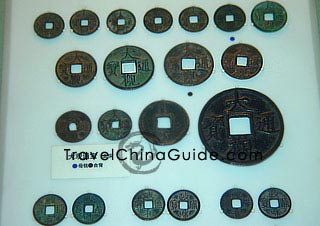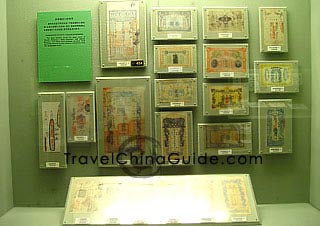Monetary Development in the Song Dynasty
Song Coins
 |
| Song Dynasty coins |
After Tai Zong, many emperors of the Song Dynasty wrote for the coins while the ones written by Emperor Hui Zong represented the zenith of the Song monetary culture.
The Chinese proverb goes, "Man should avoid entering a wrong industry while woman should avoid marrying a wrong husband." But what if you inherit the throne as an emperor? Do you have any choice? Emperor Hui Zong of the Northern Song Dynasty was such a tragic character. As a ruler, Hui Zong was unqualified. Politics was not where his interest lay and he appointed crafty ministers to reign over the country. He himself led an extremely luxurious life, extorting money from the people.
However, he was versatile in art and contributed to embroidery, painting, calligraphy and ci poem. He created a font of his own, shou jin, which features slim but firm with elegant demeanor. The four characters Da Guan Tong Bao written by Emperor Hui Zong reflect his calligraphy features to the full. It is generally regarded that to write on a coin is the most difficult for calligraphers, even much more difficult than seal cutting and plaque writing. In addition, these four characters were not easy to configure but Hui Zong achieved harmony and aesthetic feeling by outstanding skill.
Dui Qian (Couple Coins)
Fei Qian (Remittance)
Jiao Zi - the Earliest Paper Currency in the World
 |
| Old Paper Notes |
The face value was first written at the time of issuance and later was printed. Two official seals were stamped to prevent counterfeit and private issuance was forbidden. One term of an issuance lasted two years and new jiao zi would be issued at the end of each term. Later, the period for one issuance was extended to two terms and the amount of the issuance doubled, which led to depreciation.
However, jiao zi occupies an important role in both the monetary development and the money printing history.
- Last updated on Aug. 08, 2022 -